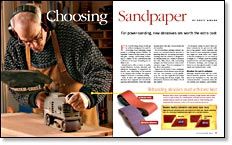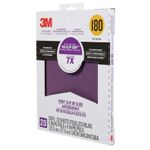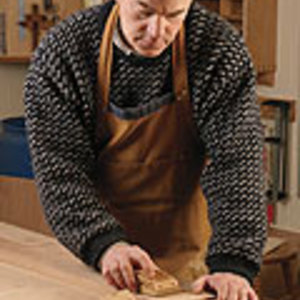Choosing Sandpaper
For power sanding, new abrasives are worth the extra cost
Synopsis: The subject of sandpaper grows more complicated each year, as manufacturers offer more and more types of abrasives, backings, and adhesives in a wider variety of belts, disks, sheets, rolls, and sponges than ever before. Whether you are sanding by hand or machine, this primer will help you sort out when to choose the new high-performance synthetic abrasives such as aluminum oxide and newer ceramics, and when to go with the naturals, such as garnet and emery; when to choose paper coated with stearates or outfitted with sophisticated backings and adhesives, and when to stick with the familiar hardware-store stand-by, 9×11 sheets.
Few woodworking shops would get far without sandpaper. It’s used for everything from flattening rough panels to polishing delicate finishes. Its versatility comes from the variety of available grits, coatings, and backings. Following is a primer on the combinations that work best for the types of sanding you are likely to do.
Manufacturers offer a variety of sophisticated abrasives, backing materials, and adhesives. Sandpaper is engineered for specific uses, depending on the material to be abraded and whether the paper is designed for hand- or machine-sanding.
Some of these new high-performance abrasives have migrated into woodworking from other industries. While they make sanding faster, they also cost more than the old standbys.
For woodworkers, striking a balance between cost and performance amounts to knowing what you are buying and understanding what the abrasive is designed to do. Manufacturers put a variety of abrasives into belts, disks, sheets, rolls, and sanding sponges, and these products come in several price ranges. There is a sandpaper for just about any purpose.
Printed on the back of most sandpaper is information about abrasive type and grit size (see “Pay attention to your grades” on p. 60). You also might find the weight of the backing and the type of glue. The information, however, isn’t likely to be all that helpful.
For example, unless you know there are three conventions for grit size (in addition to the generic coarse, medium, and fine found on some inexpensive papers), you might not really know how coarse or fine the sandpaper is. Do you need an A-weight or a C-weight paper for sanding varnish between coats? Knowing the basics of abrasives, backings, and coatings can help you sort through the jumble of trade names and murky product codes.
Abrasives: the sand in sandpaper
Although manufacturers still use a few natural minerals, synthetic abrasives coat most of the sandpaper we buy. The most common abrasives—aluminum oxide, silicon carbide, and ceramics—are synthetic, while garnet and emery (used mostly in metal-working) are the only common abrasives that occur naturally.
Manufacturers have concentrated their research on aluminum oxide and newer ceramic abrasives, designing abrasive grains that are friable or semifriable, meaning they break down to expose fresh cutting edges as the sandpaper wears.
From Fine Woodworking #178
For the full article, download the PDF below:
Fine Woodworking Recommended Products

Veritas Micro-Adjust Wheel Marking Gauge

Estwing Dead-Blow Mallet

3M Pro Grade Sandpaper























Log in or create an account to post a comment.
Sign up Log in